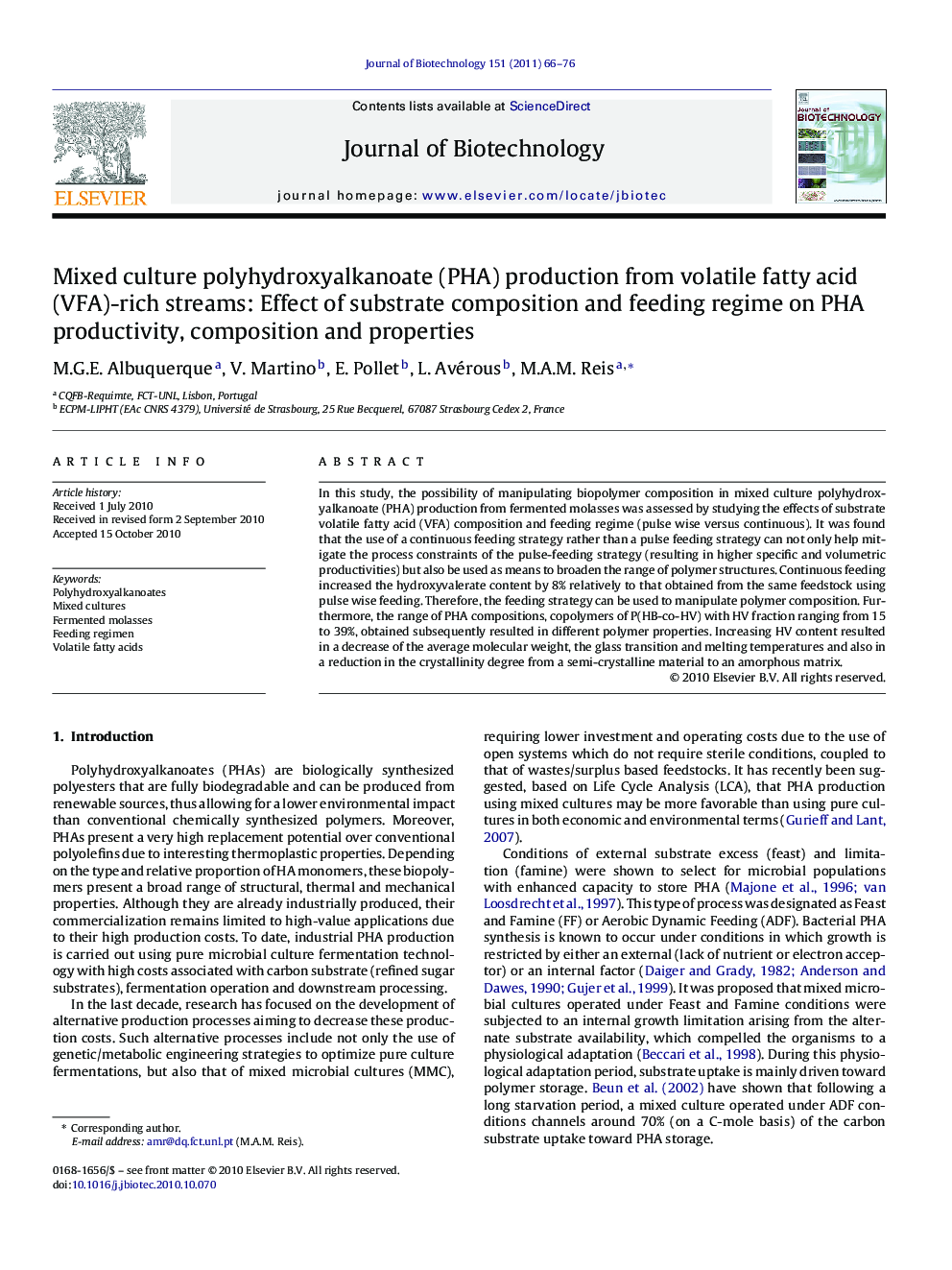| Article ID | Journal | Published Year | Pages | File Type |
|---|---|---|---|---|
| 23934 | Journal of Biotechnology | 2011 | 11 Pages |
In this study, the possibility of manipulating biopolymer composition in mixed culture polyhydroxyalkanoate (PHA) production from fermented molasses was assessed by studying the effects of substrate volatile fatty acid (VFA) composition and feeding regime (pulse wise versus continuous). It was found that the use of a continuous feeding strategy rather than a pulse feeding strategy can not only help mitigate the process constraints of the pulse-feeding strategy (resulting in higher specific and volumetric productivities) but also be used as means to broaden the range of polymer structures. Continuous feeding increased the hydroxyvalerate content by 8% relatively to that obtained from the same feedstock using pulse wise feeding. Therefore, the feeding strategy can be used to manipulate polymer composition. Furthermore, the range of PHA compositions, copolymers of P(HB-co-HV) with HV fraction ranging from 15 to 39%, obtained subsequently resulted in different polymer properties. Increasing HV content resulted in a decrease of the average molecular weight, the glass transition and melting temperatures and also in a reduction in the crystallinity degree from a semi-crystalline material to an amorphous matrix.
